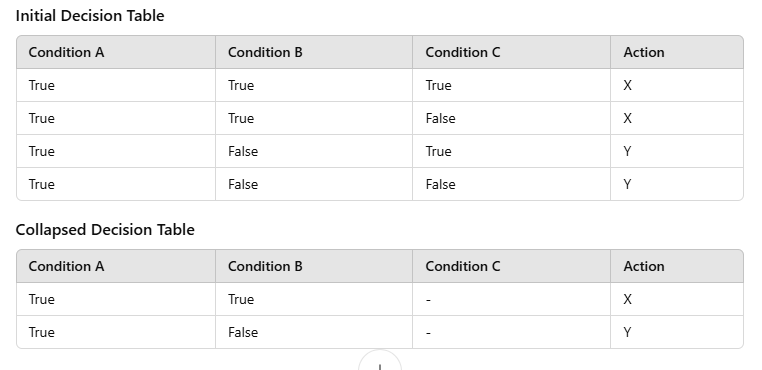A collapsed decision table technique is a method used to simplify complex decision tables by reducing redundant rows or conditions. This technique is particularly useful when there are multiple decision rules with similar outcomes or overlapping conditions. By collapsing the table, you make it easier to analyze and maintain, while ensuring that all necessary decision paths are covered.
Steps to Collapse a Decision Table
- Identify Redundancies:
- Look for rules (rows) in the decision table that have the same actions or outcomes for overlapping conditions.
- Check for identical or mutually exclusive conditions that can be combined.
- Group Similar Rules:
- Combine rows with similar conditions or actions into a single row, representing them with broader conditions or ranges.
- Use wildcards, “don’t care” values (e.g.,
-), or logical combinations (e.g.,True OR False) to generalize conditions. - Eliminate Irrelevant Conditions:
- If certain conditions don’t affect the outcome (i.e., they have no impact on the decision), mark them as irrelevant with a wildcard.
- Review for Completeness:
- Ensure that the collapsed table still covers all possible decision scenarios.
- Double-check that no valid rule was inadvertently omitted.
- Reformat the Table:
- Rearrange and label the table to make it more readable and easier to interpret.
Example
Benefits of Collapsing Decision Tables
- Improves Clarity: Reduces complexity and makes the table easier to understand.
- Saves Time: Simplifies the decision-making process by highlighting key rules.
- Minimizes Errors: Reduces the risk of overlooking conditions or duplicating rules.
